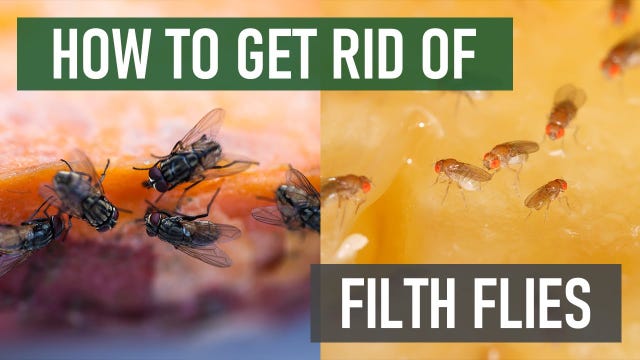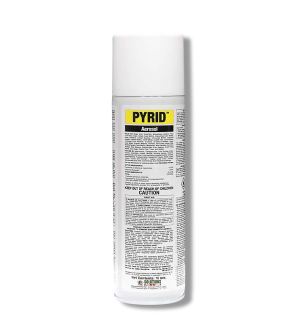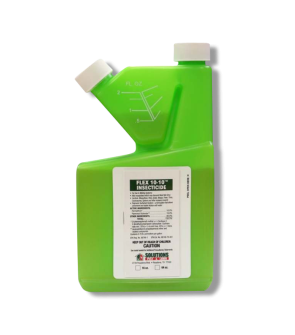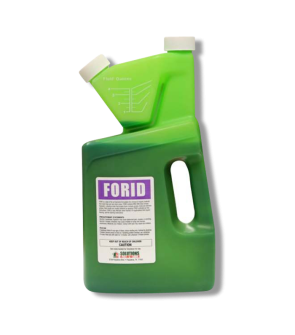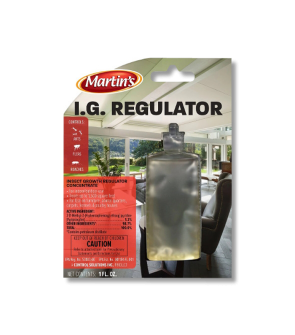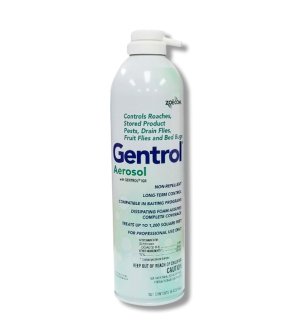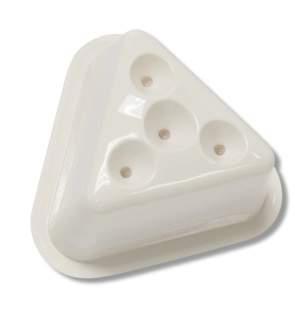Gain access to personalized product screening, the best pricing, rewards, and more!
Most Effective Products
Common Filth Flies: How to Get Rid of Filth Flies
This article provides general information for controlling common filth flies infesting in and around your home. Follow this DIY guide and the attached links to learn more about the pest and the recommended products and steps for effective elimination and prevention.
There are more than a thousand species of flies, but the ones most plagued by homeowners is the filth fly. Though each filth fly species falls into their own category they are among the most threatening to homeowners when it comes to spreading germs, diseases, and general skin irritations. These flies that often bring this danger usually eat food and lay eggs in filth, garbage, and decaying matters like manure or dead animals.
Once filth flies have touched these disgusting surfaces they will then land on animal or people food and food preparation surfaces like kitchen counters, which will then become contaminated with diseases or bacteria they are carrying. These annoying flying pests can also contaminate food and surfaces by execrating their waste on them. It is these tendencies of filth flies that make them a serious health risk for any homeowner.
Adult filth flies fall under two groups based on their size and food preference: large filth flies and small filth flies. As their name suggest common large filth flies like the house fly, blow fly, and stable fly are larger in appearance and tend to feed on manure, food waste, and dead animals while mainly developing in outdoor sites. Common small filth flies like fruit flies, phorid flies, drain flies, and fungus gnats prefer to feed on sludge in drains, rotting food like fruits and vegetables, and other decaying plant matter and are commonly found in indoor sites.
When it comes to filth flies and diseases, it is not necessarily the fly itself that homeowners are most concerned with, but where it comes from that matters. If the pest has enough time to land and walk around your food, and digesting and defecating material, then the chances of them leaving behind a trail of harmful pathogens are high. For this reason, the best form of filth fly control is constant sanitization and following the steps and recommendations listed throughout this DIY guide.
House Fly
Despite the name, house flies can be found anywhere in and around your home. These flies can travel far distances, but will remain close to food sources like garbage, compost heaps, fertilizer, sewage, and other decaying food items. Adult houseflies typically lay their eggs in any moist, warm organic material so the newly hatched larvae will have a reliable food source.
Besides their grayish black appearance, which separates them from cluster and fruit flies they are usually 1/4 inches long with four dark stripes on the thorax. Typically, house fly maggots have an off-white color and a tapered body with a pointed dark colored head. The best way to get rid of house flies from your home is to determine the filth source attracting the pest to your property and sanitizing this area as well as applying a fly trap like Musca-Stik. Additionally, you will want to use a direct fly killer spray insecticide like Pyrid Insecticide Aerosol to house flies in direct line of sight and apply Flex 10-10 in areas they commonly frequent.
Blow Fly
Blow flies are slightly larger than house flies at 0.3 to 0.4 inches, but resemble them in preference of habitats. These flies are attracted to animal waste, exposed meat, and recently deceased animals. Blow flies are generally known for its metallic blue, green, black, or copper colored bodies. Larvae are typically legless and white colored with their front ends armed with mouth hooks which they use to eat and shred decaying flesh. From their front to rear end these pests have a segmented body.
In addition to their loud droning buzzing, these pests are also known for their ability to quickly develop into adults in as little as a week. Though blow flies do not sting or bite, they are a main threat for harmful diseases like salmonella food poisoning and many others. These pests have the ability to be a problem at any time of the year, so you will need to get rid of them by removing the rotten food source and then install proper sanitization methods. Once this is done, you will need to apply Supreme IT and then treat any remaining pests with Pyrid Insecticide Aerosol.
Stable Fly
The stable fly is often mistaken for the house fly with the exception of having a piercing-type mouthpart which is used to pierce people or animal skin to obtain blood for food and egg production. Another physical difference is that stable flies will also have 4 dark stripes, but resemble a checkboard pattern. House flies will not bite because they have a sponge-type mouthpart to feed on somewhat liquid material.
Like house flies, it will deposit its eggs in wet decaying organic matter including spilled livestock feed and moist manure. Besides the risk of spreading diseases this pest will effect livestock by reducing weight, milk production in cattle, and possible heat stress of animals when they bunch together to escape this pest. To get rid of stable flies, each week dispose of manure and other decaying materials around your property. Once these conditions have been removed you will then apply as a fog application with Flex 10-10 and Martin's IGR Insecticide.
Fruit Fly
Like their name suggests, fruit flies, are small filth flies that often feed and breed on fruits, particularly soft and ripe ones. Fruit flies can also be found feeding on decaying matter inside poorly cleaned drains and garbage disposals. These pests are tan, thin oval shaped measuring about 1/8 of an inch in length including the wings. When it comes to diseases and spread of harmful bacteria the fruit flies stands with other filth fly species.
The best way to get rid of fruit flies is to keep your trash and kitchen countertops clean of any residing food odors, buildup of garbage, and properly dispose of decaying or uneaten fruit and vegetables. Store all food in sealable plastic containers to prevent fruit flies from breeding. You will also need to vacuum and mop your entire home for any possible food residues. To clean inside drains, we recommend you use Forid Drain Gel Cleaner every 5 to 7 days.
Once all sites have been cleaned you will then lay out Natural Catch Fruit Fly Traps that attracts any remaining fruit flies for up to 30 days. Lastly, use Pyrid Insecticide Aerosol for direct application on any fruit flies you see in your home.
Phorid Fly
Frequently found in homes, phorid flies are often mistaken for fruit flies with the exception that they do not have bright red eyes. Additionally, these pests can only run short distances before briefly stopping and then running in a different direction. Phorid flies are typically colored light brown to yellowish or dull brown with dull dark colored eyes and a hump on their thorax.
Phorid flies breed in or near garbage cans, clogged drains like floors or sinks, and potted plants. They will also reproduce in moist, decaying plant and animal matter such as waste in yard or litter boxes indoors. Sanitization is extremely important for getting rid of phorid flies. Indoor and outdoor garbage cans should be emptied and cleaned out on a regular basis so that food spillage does not buildup and increase habitats for this pest.
Scrub your countertops, underneath appliances, and any cracks where food can buildup. Then mop and vacuum your floors, garbage cans, and other appliances that can secretly support phorid fly populations. Keep your home free of uneaten and spoiled fruit and vegetables. You will also need to remove or address moisture issues.
First you will need to apply Forid Drain Gel Cleaner to indoor drains to remove organic buildup needed for phorid flies. For any phorid flies that are seen running around in your home you can use Pyrid Insecticide Aerosol as a contact or space spray. Lastly, you will set up Musca-Stik in your parts of your home that have seen the most phorid fly activity.
Drain Fly
Drain flies are small flies that are slightly larger than other small filth flies at about 1/8 of inch. With their distinctive grayish brown or tan colored fuzz covering their entire body might make them confused with moths hence the nickname moth fly. Besides seeing the pest itself, a drain fly can easily be identified by its short flight pattern causing the pest to gather in small groups on vertical surfaces.
Though these pests appear in small numbers they can quickly breed in standing water or raw sewage, which is often found near drains inside and outside of your home. Getting rid of drain flies can be a difficult task to undertake, but preemptive control is best since they can develop between 2-3 weeks. Organic material buildup in drains will need to be removed with Forid Drain Gel Cleaner to reduce larvae development sites. Besides eliminating the site of development you will need to target the larvae itself with Gentrol IGR Aerosol, which prevents larvae from developing into adults. To get rid of adult drain flies, we recommend using Pyrid Insecticide Aerosol on any pests that are seen traveling around your home.
Fungus Gnats
Fungus gnats are small, brown to black colored flies often noticed by homeowners around potted plants and windows. Most fungus gnats infest dead or decaying plant materials inside of your home and other areas providing moist conditions like underneath sinks and leaky plumbing. Adult fungus gnats are not known to harm people, but can be an issue to plants by spreading fungal diseases. These pests can also harm plants in their larvae stage by feasting on the plant roots causing it to become weaken then eventually kill the foliage.
When killing fungus gnats, you will need to reduce moisture around your home such as repairing leaky pipes or adjusting watering techniques to indoor houseplants. We recommend watering with a spray bottle as this will help to prevent overwatering. Only water your plants when the top 1 to 3 inches of soil is completely dry. Outdoor plants may need to be switched to a plant holder allowing for significant drainage.
Install Musca-Stik near indoor houseplants to deter adult fungus gnats from foliage. Spray Supreme IT on ornamentals that have shown fungus gnat activity make sure to apply this product as a fine mist over the plant leaves and soil. For any remaining fungus gnats, apply Pyrid Insecticide Aerosol.
Key Takeaways
What are Filth Flies?
- Filth flies are pests that feed and travel on decomposing matter that holds several harmful diseases and pathogens. Filth flies fall into two groups called large filth flies or small filth flies. The first group is more likely to infest garbage, manure, and dead animals whereas the second group tends to frequent organic debris, such as plant material that is decaying, along with debris in drains.
Are Filth Flies Dangerous?
- Most of these filth flies are scavengers that help to break down organic material, which can make them dangerous for homeowners because of the many health issues they can create. When they make contact with surfaces used for food preparation or on food can cause people to become exposed to bacteria and diseases.
How to Prevent Filth Flies
- Sanitization is essential to preventing and controlling filth flies in and around your home. This could be done with regular vacuuming and moping floors, wiping off kitchen, sink counters, and underneath appliances and garbage cans, and storing food is sealable plastic containers.






